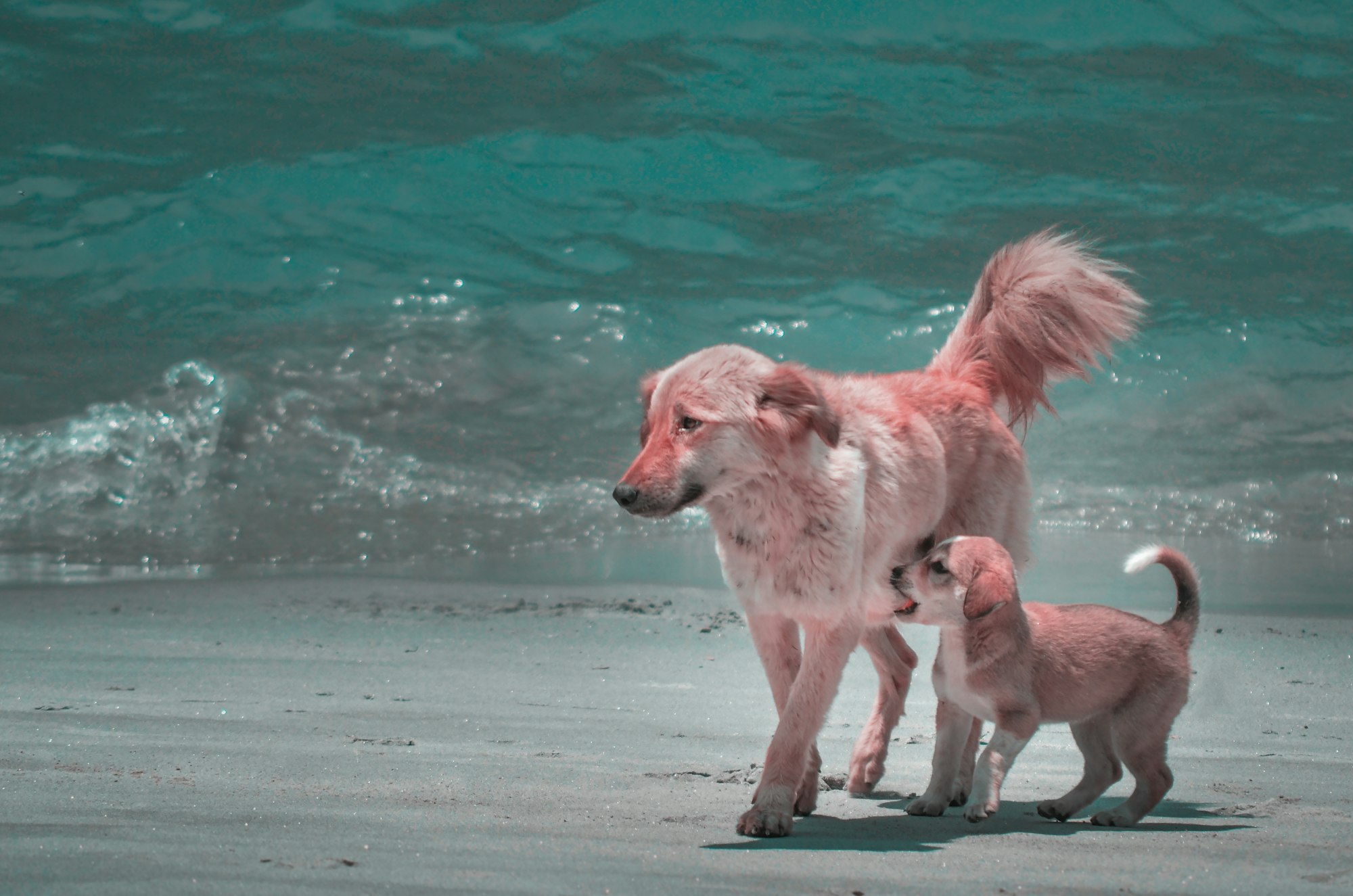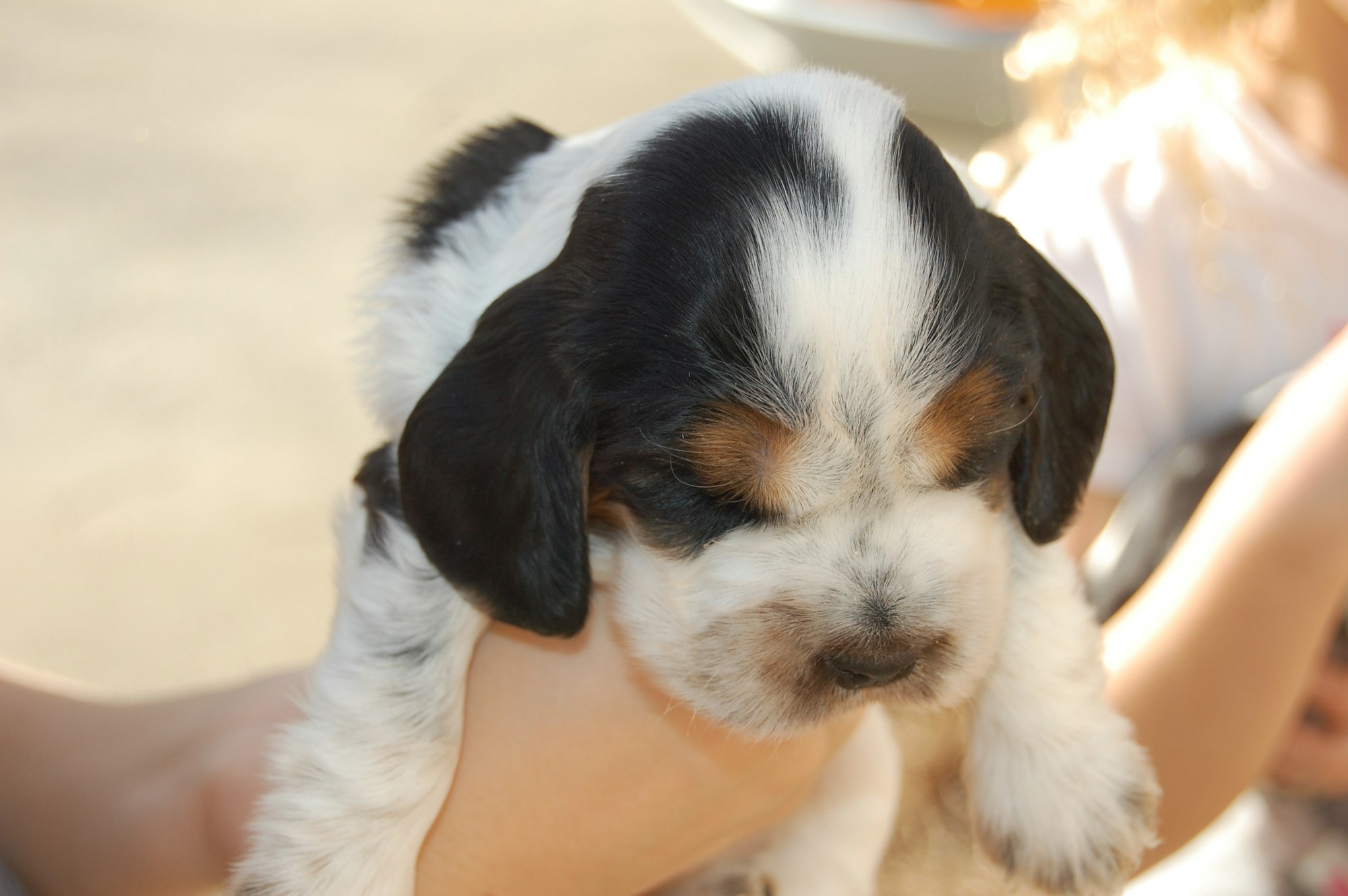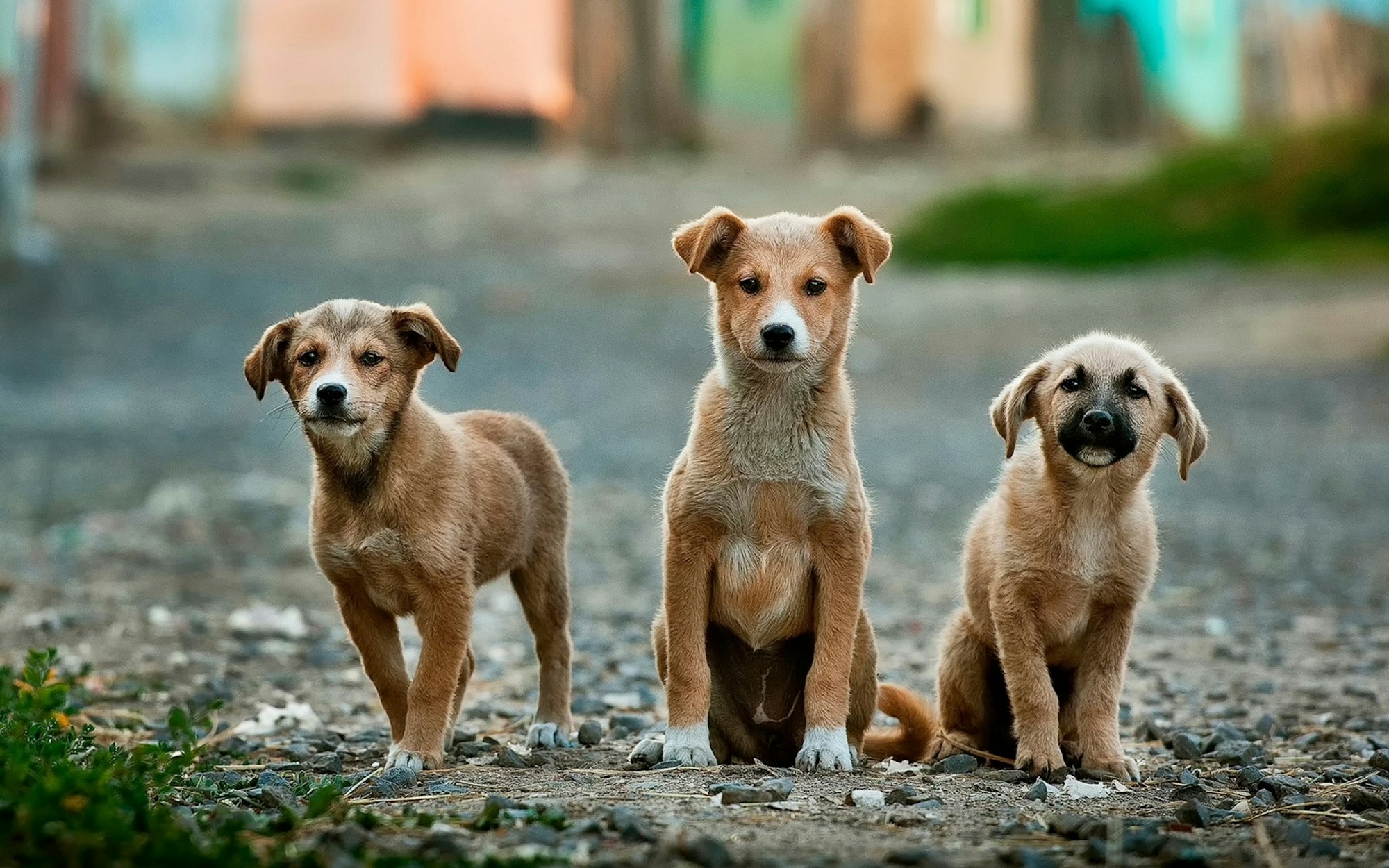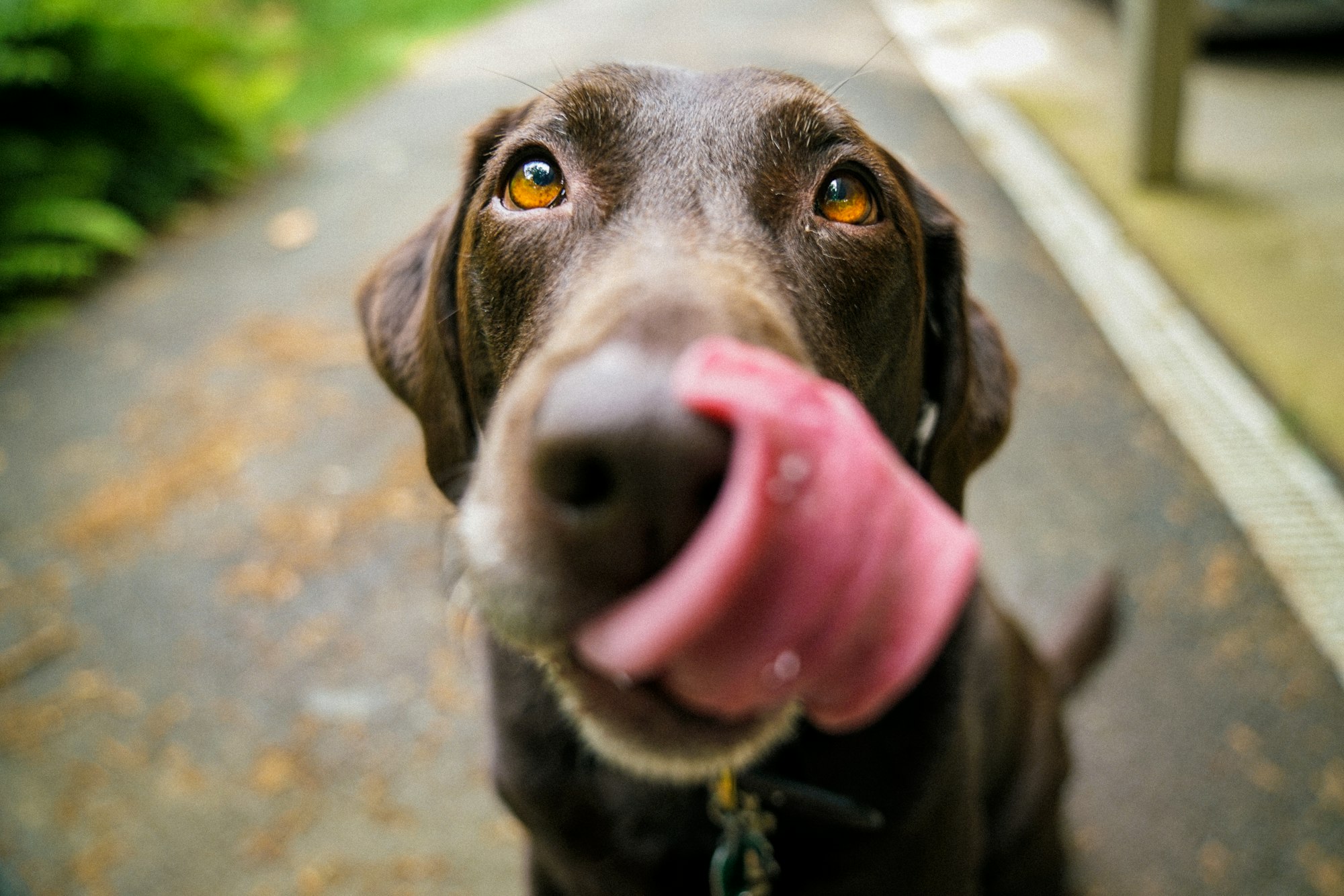Welcoming a litter of puppies into the world is an exciting and joyous event for dog owners. However, it is essential to understand the signs of labor in dogs to ensure a smooth and successful delivery process. This article will guide you through the various stages of labor and help you recognize the indications that your happy dog is ready to give birth.
Understanding the Canine Pregnancy

Canine pregnancy is an exciting time for dog owners, but it's necessary to understand the different stages and changes that occur during this period. Here's a closer look at the stages of canine pregnancy:
Early Signs of Pregnancy
The early stage of pregnancy in dogs is often characterized by subtle changes in behavior and physical signs. Some common early signs include:
1. Changes in Appetite: A pregnant dog may experience changes in her appetite. Some dogs may eat less during the early stages, while others may have an increased appetite.
2. Nipple Enlargement: As the pregnancy progresses, the dog's nipples may become enlarged and darker in color. This is due to increased blood flow and hormonal changes.
3. Behavioral Changes: Pregnant dogs may exhibit changes in behavior, such as increased affection, nesting behavior, or seeking out quiet and secluded areas.
Physical Changes during Pregnancy
As the pregnancy progresses, several physical changes become more noticeable:
1. Abdominal Enlargement: The dog's abdomen will gradually enlarge as the puppies grow. This is one of the most visible signs of pregnancy.
2. Weight Gain/ Obese Dog: Due to the growing puppies and increased fluid retention, pregnant dogs will gain weight throughout the pregnancy.
3. Ultrasound Confirmation: If you want to confirm the pregnancy, your veterinarian can perform an ultrasound to detect the presence of puppies. This is usually done around the 28th day of pregnancy.

Pre-Labor Stage
The pre-labor stage is a significant phase in canine pregnancy that indicates the imminent arrival of the puppies. During this stage, the dog's body prepares for labor and birth. Here are some key aspects to understand about the pre-labor stage:
1. Behavioral Changes: As the pre-labor stage approaches, you may notice certain behavioral changes in your pregnant dog. She may become more restless, pacing around, and seeking out a comfortable spot to give birth. Some dogs may exhibit nesting behavior by rearranging bedding or creating a cozy space.
2. Temperature Drop: Monitoring your dog's body temperature is crucial during the pre-labor stage. A significant drop in rectal temperature is a reliable sign that labor will begin soon. Normal body temperature for dogs is typically around 101 to 102.5 degrees Fahrenheit. However, as labor approaches, the temperature may decrease to below 99 degrees Fahrenheit. This temperature drop usually occurs within 24 hours of the start of labor.
3. Loss of Appetite: It's common for pregnant dogs to experience a decrease in appetite or refuse to eat altogether during the pre-labor stage. This change in appetite is a natural response to the upcoming birth. However, it's important to monitor her overall well-being and ensure she stays hydrated.
4. Vulva Swelling and Discharge: Another sign of the pre-labor stage is vulva swelling and a slight discharge. The vulva may appear larger and there might be a clear or slightly bloody discharge. These changes indicate that the cervix is starting to dilate in preparation for birth.
During the pre-labor stage, it's essential to provide a calm and comfortable environment for your good family dog. Set up a quiet area where she can feel secure and safe when the time comes for labor. Make sure the space is warm, clean, and equipped with soft bedding.
Observing these signs and changes in your dog's behavior and physical condition can help you anticipate the onset of labor. However, it's important to note that every dog is unique, and the duration of the pre-labor stage may vary. If you have any concerns or questions about your dog's pregnancy or the pre-labor stage, consult with a veterinarian for professional guidance.
Active Labor Stage
The active labor stage is the phase of canine pregnancy when the actual birthing process begins. It is an intense and critical period where the dog goes through the delivery of the puppies. Here's what you need to know about the active labor stage:
1. Frequent Contractions: During the active labor stage, the pregnant dog will experience strong and frequent contractions. These contractions are the result of the uterus contracting to push the puppies through the birth canal. You may notice visible tightening and relaxation of the dog's abdomen during each contraction.
2. Water Breaking: Just like in human childbirth, a dog's water can break during labor. The water breaking refers to the rupture of the amniotic sac, which releases the fluid surrounding the puppies. It may appear as a gush of clear fluid from the dog's vulva. However, it's important to note that not all dogs will have a visible water break, and it is not a cause for concern if it doesn't occur.

3. Visible Straining: The dog will exhibit visible straining efforts during contractions. She may assume a squatting position, push, and strain to help deliver the puppies. The straining is a natural instinct and an essential part of the birthing process.
4. Puppy Delivery: As the active labor stage progresses, the puppies will be delivered one by one. Each puppy should be born headfirst, with the amniotic sac intact. The mother will instinctively break the sac, clean the puppy, and stimulate its breathing. It is essential to allow the mother to handle the delivery process herself unless complications arise.
5. Break Between Puppies: There is typically a break of 10-60 minutes between the delivery of each puppy. During this break, the mother may rest and tend to the previous puppies. It is normal for the mother to pause between deliveries, but if the break extends beyond two hours or she appears distressed, it is advisable to seek veterinary assistance.
6. Assistance During Birth: In most cases, dogs can give birth without human intervention. However, it's essential to be observant and ready to assist if complications arise. If you notice prolonged straining without the delivery of a puppy, excessive bleeding, or any signs of distress, contact your veterinarian for guidance and support.
Understanding the active labor stage is crucial for recognizing the normal progression of the birthing process. While complications are rare, it's important to stay vigilant and seek veterinary help if necessary. Providing a calm and supportive environment for the mother during active labor is key to successful delivery.
Delivery of Puppies
The delivery of puppies is the culmination of the canine labor process, where the mother brings her precious offspring into the world. Understanding what to expect during this stage can help you provide the necessary support and care. Here's what you need to know about the delivery of puppies:

1. Presentation and Expulsion: The first puppy is usually born within an hour after visible straining begins. It should be delivered headfirst, with the amniotic sac intact. The mother dog will instinctively lick and clean the puppy, which stimulates breathing and removes the sac. This process helps establish the vital bond between the mother and her newborn.
2. Break Between Puppies: Following the birth of each puppy, there is typically a break of 10-60 minutes before the next one arrives. During this break, the mother may rest, nurse the previous puppies, or clean them. It is essential to give her space and observe from a distance to allow her to perform her maternal duties.
3. Assistance During Birth: Most dogs can give birth without human intervention. However, there are instances where assistance may be required. If you notice prolonged straining without the delivery of a puppy, excessive bleeding, or signs of distress in the mother, it is crucial to seek veterinary assistance promptly. A professional can assess the situation and provide necessary intervention if needed.
4. Post-Delivery Care: After delivering each puppy, the mother will continue to care for them. She will chew off the umbilical cord and lick the puppies to stimulate breathing and digestion. The mother's instinctual nurturing and warmth are vital for the well-being of the newborns.
5. Monitoring and Health: As the puppies are born, it is crucial to monitor their health and overall well-being. Ensure that they are nursing and gaining weight. Their breathing should be regular, and they should exhibit signs of vitality. If you notice any abnormalities, such as weakness, difficulty breathing, or inadequate nursing, consult with a veterinarian for guidance. Using Fi GPS Dog Collars is one good choice to monitor your beloved activities.
Remember, each puppy's birth is a unique event, and the duration and progression of the delivery process may vary. Providing a calm, clean, and safe environment for the mother and her puppies is essential. Minimize disturbances and avoid unnecessary handling during this sensitive time.

The delivery of puppies is a remarkable and joyous occasion. Being present to witness the miracle of life is a privilege. Ensure that you are prepared, informed, and ready to offer assistance if needed, while also respecting the natural instincts and abilities of the mother dog.
Post-Labor Stage
The post-labor stage is a critical period that follows the delivery of puppies. It is a time when the mother dog and her newborns require special care and attention. Here's what you need to know about the post-labor stage:
1. Maternal Bonding: After giving birth, the mother dog will continue to nurture her puppies. She will instinctively clean them, stimulate their breathing, and encourage them to nurse. This bonding process is crucial for their physical and emotional well-being. Allow the mother to fulfill her maternal duties and avoid unnecessary interference unless there are signs of distress or complications.
2. Nursing and Nutrition: Proper nutrition is vital for both the mother and her puppies during the post-labor stage. The mother's diet should consist of high-quality puppy food to support milk production. Ensure she has access to fresh water at all times. The puppies will solely rely on their mother's milk for the first few weeks, so it's essential to provide a quiet and comfortable area for nursing.
3. Monitoring the Puppies: Regularly observe the newborn puppies to ensure they are thriving. They should be active, steadily gaining weight, and nursing regularly. Keep an eye out for any signs of weakness, lethargy, or poor appetite, as these could indicate health issues. If you have concerns about a puppy's well-being, consult with a veterinarian for proper assessment and guidance.
4. Cleanliness and Hygiene: Maintaining cleanliness is crucial for the health of the mother and her puppies. Keep their living area clean and free from feces or urine. However, avoid excessive cleaning or using strong chemicals, as it may disrupt the natural scent that helps the mother bond with her puppies.
5. How Often Vet Check-Up: Schedule a post-labor check-up for the mother dog and her puppies with a veterinarian. The vet will assess their overall health, provide necessary vaccinations and deworming treatments, and offer guidance on proper care. Regular veterinary visits during the post-labor stage are essential for the well-being of both the mother and her puppies.
Recognizing Abnormalities
While most canine births progress smoothly, it's critical to be able to recognize abnormalities or complications that may arise. Here are some signs that indicate a need for veterinary assistance:
1. Excessive Bleeding: If the mother is experiencing heavy bleeding that doesn't subside or shows signs of weakness, it could indicate a serious problem. Seek immediate veterinary attention.
2. Prolonged Straining: If the mother continues to strain for an extended period without delivering a puppy, it could be a sign of a blocked birth canal or other complications. Veterinary intervention is necessary in such cases.
3. Neglect or Rejection: If the mother shows signs of neglecting or rejecting her puppies, such as not nursing them, not keeping them warm, or displaying aggressive behavior towards them, it requires prompt veterinary evaluation and intervention.
4. Abnormal Puppy Behavior: If any of the puppies show signs of distress, weakness, difficulty breathing, or are not nursing adequately, it is required to consult with a veterinarian for assessment and appropriate care.
Remember, trust your instincts, and closely monitor the mother and her puppies during the post-labor stage. If you notice any concerning signs or abnormalities, seek professional veterinary advice promptly. Providing a nurturing and supportive environment is crucial for the health and well-being of the entire litter.
Conclusion
Understanding the signs of labor in dogs is crucial for ensuring the health and well-being of both the mother and the puppies. By recognizing the indications and stages of labor, you can provide the necessary support and seek veterinary assistance when needed. Remember to create a comfortable and safe environment for the birthing process and monitor the mother and puppies closely during the post-labor stage.
FAQs
1. How long does labor typically last in dogs?
The duration of labor can vary, but it usually lasts between 6 to 12 hours. However, it can take longer, especially if it is your dog's first litter.
2. Can I assist my dog during labor?
Most dogs can give birth without human intervention. However, if you notice any signs of distress or complications, it is best to seek veterinary assistance.
3. Should I remove the puppies' amniotic sacs?
In most cases, the mother will instinctively break the sacs and clean the puppies. However, if she fails to do so, you can carefully remove the sac to allow the puppies to breathe.
4. When should I be concerned about prolonged labor?
If your dog has been in active labor for more than 24 hours without delivering any puppies, it is a cause for concern, and you should contact your veterinarian immediately.
5. How soon should the puppies nurse after birth?
Ideally, the puppies should start nursing within the first hour after birth. This is crucial for their initial nutrition and to stimulate bonding with the mother.






